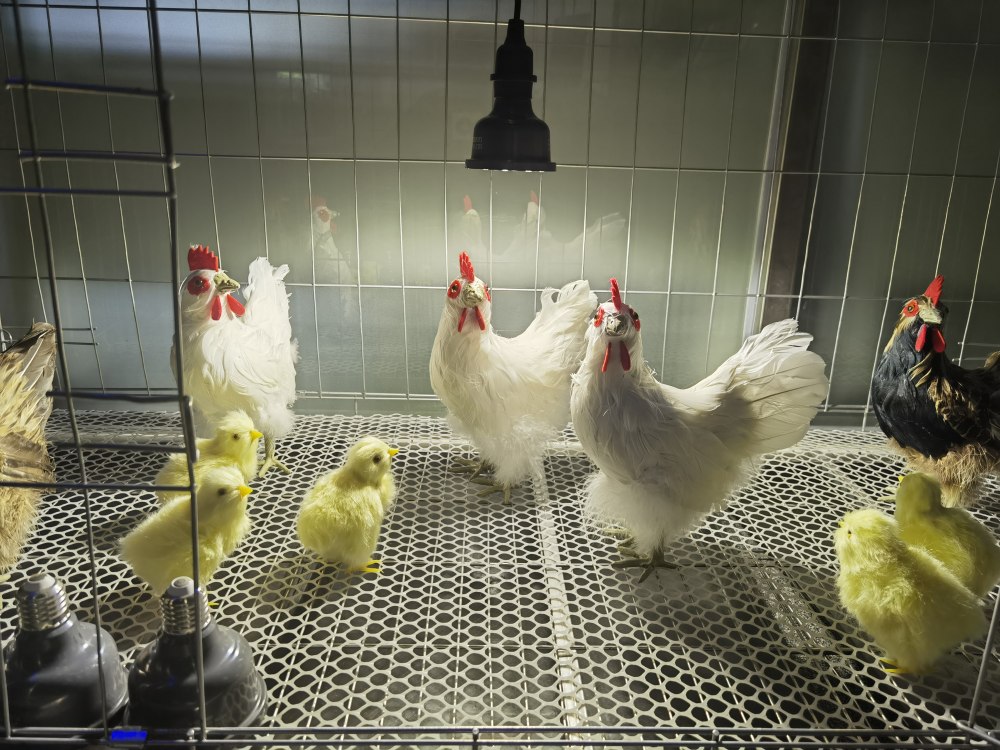The effect of light color that poultry farmers may not be aware of
Jul 02, 2025
It is well known that chickens are highly sensitive to light and have a high perception of light color. However, do you know what effects different light colors have on poultry farming?
Under normal circumstances, 5000K led poultry light is used for broiler farming.
The blue light component with a color temperature of 5000K can effectively stimulate the appetite of broilers, increase their feed intake, and thereby promote weight gain. The red light component can enhance metabolic levels and help broilers utilize feed energy more efficiently.
3000K led poultry light is used for breeder farming. Warm white light with a color temperature of 3000K is closer to sunlight, which can better balance the ratio of red and blue light, stimulate the production of sex hormones in breeders, promote the development and maturation of the reproductive system, and is conducive to improving reproductive performance.
In the early growth stage of broilers, green light treatment can significantly enhance weight gain. Green light stimulation can increase the secretion of growth-promoting axis hormones in the later embryonic stage and early brooding stage of broilers, enhance the mitotic activity of skeletal muscle satellite cells, and up-regulate myogenic regulatory factors, thereby promoting muscle growth. In addition, green light can improve the structure of the small intestinal mucosa in broilers, promote the proliferation of intestinal gland cells and small intestinal goblet cells, enhance the efficiency of nutrient digestion and absorption, and thereby promote growth and development.
In the later growth stage of broilers, blue light can significantly increase the feed conversion rate, enabling broilers to achieve higher weight gain with the same feed intake. Blue light can stimulate the anterior pituitary gland to secrete luteinizing hormone (LH) and follicle-stimulating hormone (FSH). These two hormones respectively regulate the development of the ovaries and testicles, thereby promoting the maturation of the reproductive system. Blue light can promote the synthesis of muscle proteins and enhance the quality of meat. For instance, blue light can improve indicators such as pectoral muscle weight and leg muscle weight in broilers, and reduce the feed-to-weight gain ratio (F/G), enabling broilers to utilize feed more efficiently.
During the rearing stage of young chickens, green light irradiation should be used. However, after they reach sexual maturity and start laying eggs, red light irradiation can be switched to. Red light can promote the secretion of gonadotropins in laying hens, thereby facilitating follicular development and ovulation, and thus increasing egg production. In addition, red light can also improve the biological clock of laying hens and reduce the impact of biological clock disorder on the regularity and stability of egg production.
Ultraviolet radiation can convert 7-dehydrocholesterol in chicken skin into vitamin D3, thereby promoting the absorption of calcium in feed and ensuring bone health. Ultraviolet rays can kill harmful microorganisms in the chicken house environment and reduce the risk of disease transmission. Indoor breeding can simulate natural light through LED lighting and be regularly disinfected in combination with ultraviolet lamps.
Xiamen Good Light Technology Co., Ltd. has recently launched the Two-color LED poultry farming lighting products. They belong to the poultry growth lighting. Two light colors can be switched on one lamp. It can meet the breeding needs of different chicken breeds and at different stages. It can improve the breeding environment of chicken houses and promote the healthy growth and development of poultry. The company is committed to creating unmanned breeding and more energy-efficient, environmentally friendly and healthy closed poultry houses sustainable farming lighting.
Website: www.xmgoodlight.com
Online store: xmgoodlight.en.made-in-china.com
Direct contact Email: anne@xmgoodlight.com

 Network Supported
Network Supported